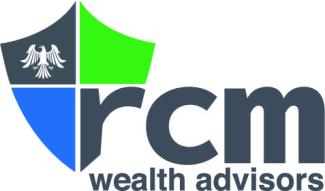RCM Managed Asset Portfolio - Q2 2020
RCM Managed Asset Portfolio - Q2 2020
Christopher Chiu |
RCM Managed Asset Portfolio
By: Christopher Chiu, CFA
As we head into the second half of 2020 much has happened to the American economy and its equity markets. It’s worth summarizing some of these events, if only to remind people that unexpected events can always occur. Then we’ll discuss what we might expect for the second half of 2020.
I. Review of the Past 6 Months
1. Heading into 2020, the American economy was already slowing.
Heading into 2020 the economy was already beginning to slow because there wasn't any more slack in the labor force. Everyone who wanted to work had a good chance of finding employment, even if it wasn't their ideal job. This can be seen in the historically low rates of unemployment at the end of 2019.
2. Generally, the economy moves in cycles. And when things can't get any better, they eventually grow worse. The economy can crest and plateau for awhile but eventually economic activity will start to fall off. Some indications that this was bound to happen was the low level of capital investments by businesses in 2019. People who manage and operate businesses know more about the health of their local economy than any economist or market forecaster and when they don't have confidence, they won't spend heavily on 5-10year capital projects. They'd rather hold that cash for a rainy day.
3. The unknowns of COVID-19 caused shuttering of business activity and the sharpest market downturn in March
The world economy had an unexpected surprise with the introduction and spread of COVID-19 around late January. There is much talk about what should have been done, but really the economic effects of the pandemic were driven mostly by fear of what this disease could have done. No one knew how bad it could get. So most sought the safest approach, socially and financially. This resulted in the market turning down -35% from its high before bottoming on March 23.
4. The market eventually shrugs off the unknowns of this disease with the help of the Fed asset buying programs. Or has it?
It is still the lack of knowledge of this disease that is preventing us from getting back to normal economic activity, even today. Yet the stock market has rebounded sharply, getting back to even for the year in the beginning of June. This is partly because the Federal Reserve Bank initiated ten different bond buying programs, including Treasury bonds, corporate bonds, high yield bonds, municipal bonds. In name, this provided liquidity, or short term cash, to help these entities get through the duration of the economic slowdown so far. What it really did was boost market confidence.
5. How does the market look right now?
All that being said, the market in many respects seems fully priced: It is back to the levels it was at before the slowdown or the pandemic even occurred! But the valuations across the market are not uniform. Cyclical stocks would seem greatly undervalued if we truly get back to normal. But some growth stocks seem overvalued even if we do get back to normal. What you find is some extreme valuations in both directions and the market indices reflect an average of both extremes.
The market may go higher if growth comes back strongly, or it may muddle around at these levels waiting for growth to eventually catch up. Or, it can go down sharply again if growth fails to appear at all and we enter a period of further contraction. All these things are possible.
II. The Present
Unpredictability
In investing, there is a lot that is unpredictable and contradictory. While the economy has done poorly of late and may be coming out of it, the stock and corporate bond market has priced in almost a full recovery. Buying begets buying as people start to feel confident and then emboldened when others take part as well. But a buying stampede can just as quickly turn into a selling stampede if sentiment turns in the other direction..
The economic signals that we relied on to take some risk off late last year have been largely used up. Back then we were able to take some risk off because it was clear the economic cycle was about to turn. But since those signals have occurred, it is no longer clear whether the cycle is still in the midst of turning or whether it has finished its turn. Will we continue to contract or has the economy already started the process of growing again? Certainly the contraction has slowed. But is it about to complete its turn and not look back?
Right now, these are some of the most important questions in investing and the answers are also the hardest to predict. Just like everyone, I see green shoots of economic activity but I also continue to see some very bad economic data. To know the ultimate answer to these questions you would have to know how the pandemic will ultimately effects us and how the economy will handle all this additional fiscal and corporate debt that has been created to alleviate the economic downturn. Also, lest we forget, this year is an election year. These are all difficult things to gauge.
So what are portfolio managers to do given all these uncontrollable circumstances? We think it is futile to predict what can’t be predicted or to try to control what cannot be controlled. But if we can focus on controlling what is controllable, our investors will come out ahead.
One thing we do know for certain is that the trend of e-commerce, which was already gaining traction before the pandemic, has now only accelerated. Investors have of course realized this too and have bidded up the price of shelter-in-place stocks. While we have some of these stocks, we would like to get more of these at lower prices.
But it isn’t simply ecommerce that will benefit from working-from-home, it’s the cashless payment system that accompanies e-commerce that has been growing as well. We have opened or expanded many positions in the active equity portfolios that stand to benefit from this development. These include Visa, credit verifier TransUnion, and Fiserv, which provides and maintains the ledger software for the credit-issuing banks, like JP Morgan. We also bought Zoom, which allows people and business to maintain contacts in the midst of this nationwide sheltering.
We also know that some industries that were hit during the market downturn will eventually return to strength, though this will take longer. We bought some stocks that we had always wanted to own for years but couldn’t until they came back into our price range. One of these is the homebuilder NVR, which we have waited seven years to own. NVR has a different business model than other homebuilders, one which reduces risk by taking an option on property lots than buying the land outright. Homebuilding continues to be an industry dominated by regional players. Whether another homebuilder in the Northeast and Mid-Atlantic can duplicate NVR’s business model remains to be seen. No one has been able to do it so far.
These are a few of our recent ideas for the actively managed equity portfolios.
III. The Future–When Will We Get Some Predictability?
We will get some predictability when the perception of a public health crisis abates. This will likely result from the approval of a credible vaccine. But don’t be surprised if we experience some turbulence before that happens. A significant pullback would be absolutely consistent with historical norms. But a major pullback also may not happen and this is why we have still been buyers of this market and not sellers.
In the meantime we will continue to look at some signs of weakness in the equity market. These signs will come from the equity market itself, but also from the bond market, specifically the high yield bond market and to a lesser extent, the Treasury market. Both helped us this past March, as Treasury yields fell and high yield spreads widened before the downturn.
Both signals have limitations, however. First, the Treasury market can provide false signals since Treasury yields can move for reasons having nothing to do with the stock market. Second, yield spreads don’t always change before a market crash; instead they sometimes occur simultaneously. Third, the Fed as a buyer of the bond market may have distorted the bond market’s ability to provide an accurate signal. Finally, these signals may not be that helpful in telling us ahead of time the duration and severity of a drawdown, only that it may happen or that we are in the middle of one.
One signal alone may not mean very much, but when many signals are telling you the same thing, then managing a sell-off becomes part of the controllable actions we can take.

